Pet Separation Anxiety and COVID-19
Posted: 05/23/2023 | BY: Erin Cain | Categories: Behavior , Dog , Health problems , Pet care
As COVID-19 stay-at-home orders lift and many students are headed back to school, your pet, who is accustomed to having their human family around constantly, is suddenly going to be home alone. If you’ve been working from home, you and your family may have had more time to spend in your pet’s company, going on walks and playing in the yard. With more businesses and schools opening, that’s all about to change. Abrupt changes in schedules can lead to pet separation anxiety, causing her to act out in problematic and even destructive ways.
Even if you aren’t ready to head back to work or school yet, planning is critical to preventing separation anxiety in your dog or cat. Here’s what you should know about pet separation anxiety and how to prevent your pet from going through this kind of emotional distress in your absence.

What is pet separation anxiety?
Separation anxiety is a disorder where a pet exhibits extreme stress or anxiety when left alone at home. Between 20 and 40 percent of dogs may suffer from this condition. The origins of this state are in a dog or cat’s instinctual need to be with her mother and siblings. Puppies and kittens experience stress and anxiety when they are separated from their mother when they are babies. It’s a natural survival mechanism for small mammals to then cry in distress for their mother, making it easier for their mother to find and care for them. After all, in the wild, those babies left behind were less likely to survive.
So how does this instinct apply to your modern-day domesticated dog or cat? Your pet still has that natural need to be part of a pack or group, even as an adult. With the pandemic forcing many people to be home for longer periods than usual, your pet has become accustomed to your presence at all times of the day. If you suddenly disappear, she may become confused and scared, leading to separation anxiety and its subsequent symptoms.
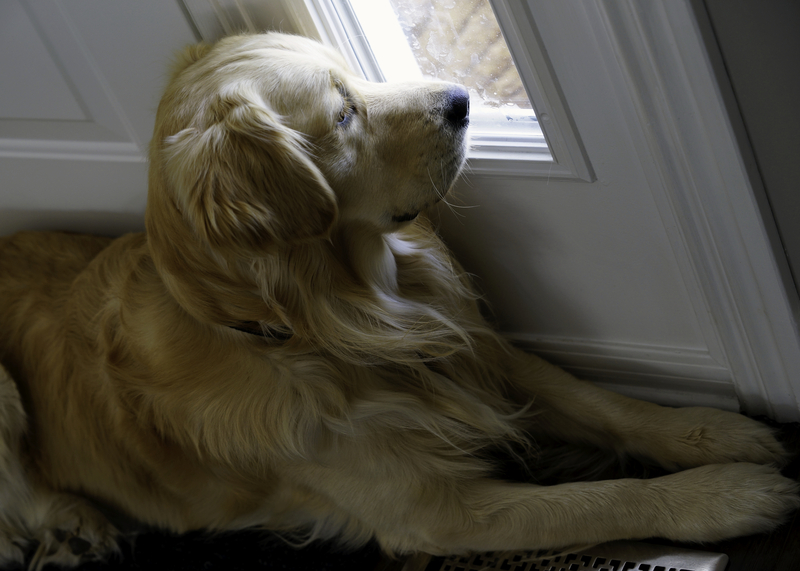
Pet separation anxiety myths
It’s also important to note that the term “separation anxiety” gets tossed around often and can be misdiagnosed in your pet. Some pets will experience “isolation distress,” where they don’t want to be alone, and being in the presence of any person will make them feel better. Separation anxiety happens when the pet becomes hyper-bonded to one person. In these cases, the pet will continue to show signs of stress, even if other people and pets are nearby.
One of the biggest pet separation anxiety myths is that only dogs suffer from this condition. Because cats are seen as independent or detached, many people think their cats won’t develop separation anxiety. In fact, some cats can develop separation anxiety, especially if the cat has bonded strongly with a member of the family. While some cats are fine by themselves for a few hours, others may have great difficulty adapting to a sudden change in schedule that leaves them alone for most of the day.
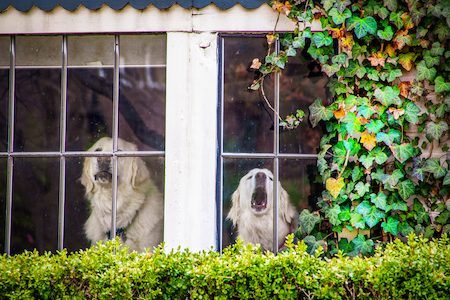
What are the signs of pet separation anxiety?
The signs of pet separation anxiety vary from pet to pet, and you should make sure that your dog or cat is exhibiting these signs only before or during their favorite person’s absence from the home. Suppose your dog or cat is eliminating where they shouldn’t or refusing to eat food. In that case, they may have a severe medical condition that has nothing to do with separation anxiety. Always contact your veterinarian if your pet shows signs of odd or abnormal behaviors to rule out medical problems first.
Here are the signs of pet separation anxiety in dogs and cats:
Signs in dogs
- Excessive barking, whining or howling
- Pacing or trembling, especially as you prepare to leave the house
- Accidents in the house
- Destructive behaviors like digging and chewing at carpeting, doors, blinds, and windows
- Excessive panting, salivation, or drooling
- Following the pet parent from room to room before they leave
- Hyperactivity
- Obsessive-compulsive or self-destructive behaviors such as licking or chewing at paws or flanks
- Extreme excitement upon the pet parent’s return home
- Escape attempts (out the doors, windows, or backyards)
- Lack of appetite
Signs in cats
- Excessive vocalization, particularly loud and persistent meowing
- Destructive behaviors like clawing and shredding blinds, curtains, doors, paper products
- Lack of appetite or eating too fast
- Urination or defecation outside of the litter box
- Vomiting
- Overly excessive greetings when the pet parent comes home
- Excessive grooming
- Hiding behavior
- Following the pet parent from room to room before they leave the house
If you notice these signs in your pet before leaving your house or school, or you come home to a whirlwind of destruction in your home more than once, your pet may have separation anxiety.
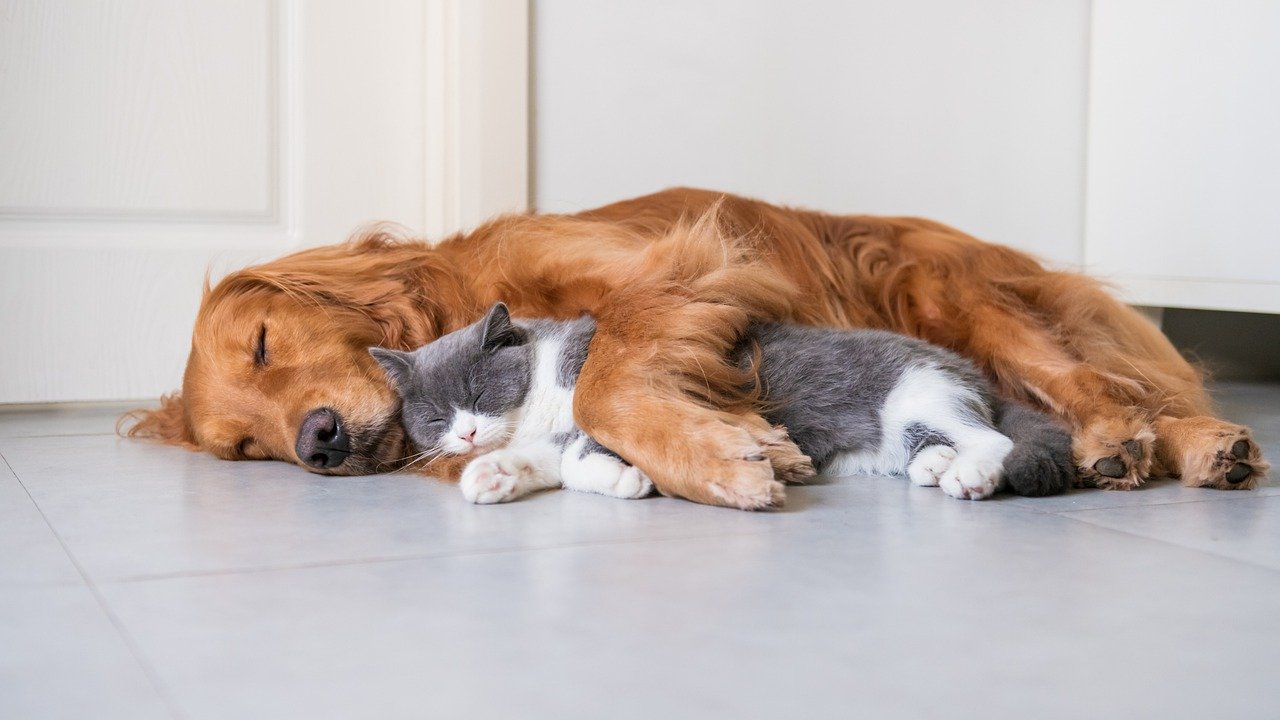
How can you treat or prevent separation anxiety in your pet?
If your pet is suffering from separation anxiety, there are a few steps you can take to treat this condition:
- Exercise your pet before you leave the house. Take your dog for a brisk walk or play fetch in the backyard for 20 – 30 minutes. Play games with your cat that allow for her to jump and chase and eliminate extra energy.
- Go back to your original routine before you go back to work. Practice gradually working in the new routine before you go back to work or school. Let your pet get used to seeing you get up, shower, have coffee and breakfast, and spend some time with her. Then, give her a busy toy to keep her occupied, grab your keys, and walk out the door. Walk around the neighborhood, take a quick run to a store, or just hang around outside for a few minutes. Practice this step repeatedly throughout the day, so your pet becomes accustomed to your departure.
- Keep calm when leaving or arriving home. This step is hard, because we all love the rush of dopamine we experience seeing how happy our pets are when we come home, and we often respond in kind. However, if we react to our pets in an excessively excited manner, we are only feeding into their sense of anxiety. Avoid encouraging clingy behaviors by remaining calm when you leave and return to your home. Gently praise your pet when she greets you in a happy yet polite manner.
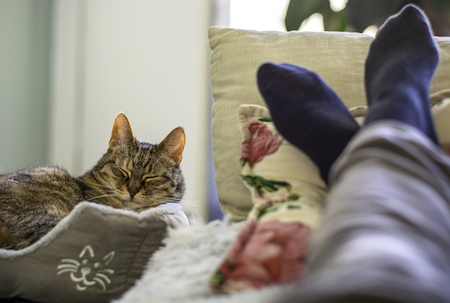
- Avoid crating your dog unless she’s accustomed to it already. If your dog isn’t crate-trained, then she may not see it as a safe haven; instead, she may view it as a trap. Some dogs may experience higher levels of anxiety in a crate, and even try to break out, which can cause serious injuries.
- Use enrichment techniques. There are a variety of enrichment tools available to keep your dog focused and entertained while you’re out of the house. From the tried-and-true Kong dog toy to catnip toys to behavioral aid toys, there’s bound to be a toy out there that will keep your pet engaged during your work shift. Enrichment keeps your dog’s mind busy in a healthy way, meaning she’s less likely to become bored or afraid and turn to destructive behaviors.
- Try natural stress-reducing remedies. Whether it’s a stress-relieving wrap shirt for your dog or pheromone-releasing air diffusers for cats, there are many products designed to make your pet relaxed and calm without medication. Plug-ins and sprays are easy ways to make your pet’s time home alone peaceful and relaxing.
- Talk to a pet behavioral therapist or trainer. If your pet is suffering from extreme separation anxiety, don’t try to go it alone. Reach out to a pet behavioral therapist or a certified, reputable trainer to help guide you through the process of making your pet’s life — and your own — happier and less stressful.
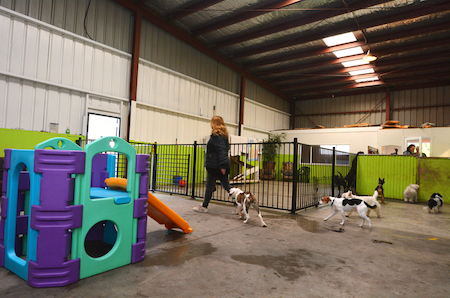
- Consider doggy daycare. If you’re comfortable taking your dog to a daycare facility, give it a try. You’re guaranteed to have a happy and exhausted pup when you pick her up and bring her home. Doggy daycares offer lots of physical and mental stimulation along with great socialization opportunities for your dog. Many centers also have video cameras on the dogs all day so you can access their feed and watch your dog playing while you’re at work.
- Ask your veterinarian about anxiety-reducing medications. If your pet is experiencing extreme anxiety or other anxiety-reducing measures haven’t worked, speak with your veterinarian about prescribed medication options. Clomicalm, Reconcile, and gabapentin are popular and relatively safe medicines for controlling your pet’s anxiety.
Finally, of utmost importance is this: don’t punish or scold your dog for their behavior due to separation anxiety. Your dog or cat is not destroying your couch pillows or shredding the toilet paper in the bathroom out of anger or spite; they are afraid because their person isn’t there. Raising your voice or separating your pet from the rest of the family as punishment will only make your pet’s anxiety worse. It won’t solve the problem, just create a bigger one.
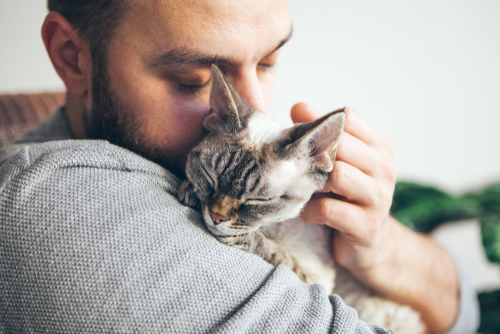
Be prepared to stop separation anxiety before it starts.
Whether you’re back at work or school or you’ll soon be there, prepare your pet for the changes ahead. Condition your pet to spend time alone, address any behavioral changes right away, and never punish your pet for acting out. Above all, be patient with your dog or cat. It takes time to control and conquer separation anxiety, but with love and consistency, you and your pet can make this change together.
References:
- University of Illinois College of Veterinary Medicine. (2020). Separation Anxiety in Dogs. Retrieved from https://vetmed.illinois.edu/separation-anxiety-dogs/
- Miller, P. (2019). How to Help With Separation Anxiety in Dogs. Retrieved from https://www.whole-dog-journal.com/behavior/how-to-help-a-dog-with-separation-anxiety/
- Delaware Valley Golden Retriever Rescue, Inc. (2015). Understanding and Managing Canine Separation Anxiety. Retrieved from https://www.dvgrr.orghttps://media.petinsurancereview.com/2015/11/Education_Behavior_separation-anxiety.pdf
- Marek, R. (2019). They’re Not Loners: Cats Can Have Separation Anxiety, Too. Retrieved from https://fearfreehappyhomes.com/theyre-not-loners-cats-can-have-separation-anxiety-too/
- Fierberg, E. (2018). How dogs affect your body and brain. Retrieved from https://www.businessinsider.com/how-having-dog-affects-your-body-brain-pet-oxytocin-animal-baby-2018-5
- Falls Village Veterinary Hospital. (2020). Pet Separation Anxiety as COVID-19 Stay Home Orders Lift. Retrieved from https://raleighncvet.com/general-health/separation-anxiety-covid-19-stay-home/
- Madson, C. (2020). Choosing the Best Daycare for Your Dog. Retrieved from https://www.preventivevet.com/dogs/how-to-choose-a-dog-daycare
- Brooks, W., Calder, C., Bergman, L. (2020). Separation Anxiety: The Fear of Being Alone. Retrieved from https://veterinarypartner.vin.com/default.aspx?pid=19239&id=9673053
Disclaimer
The information contained on this blog is intended for informational and educational purposes only and should not be construed as medical advice. It is not a substitute for professional veterinary care. Always consult with your veterinarian before making any changes to your pet's health care or treatment plan.
The authors of this blog are not veterinarians and do not claim to be experts in pet health. The information provided here is based on our own experiences and research, as well as information from reputable sources. However, we cannot guarantee the accuracy or completeness of this information.
We encourage you to do your own research and consult with your veterinarian before making any decisions about your pet's health.
Previous post
Dog Car Accessories | Top 20 Dog Car Travel AccessoriesNext post
Treating Hot Spots on Your DogCompare top pet insurance providers plans.
Enter your dog’s age in years and months to calculate their age equivalent to human years.
Calculate your dog’s ageEnter your cat’s age in years and months to calculate their age equivalent to human years.
Calculate your cat’s age